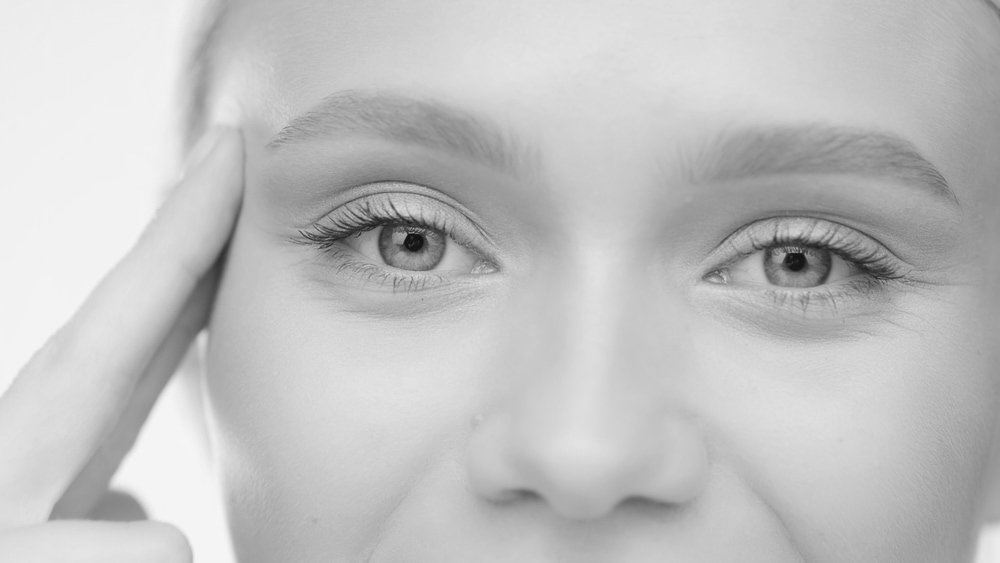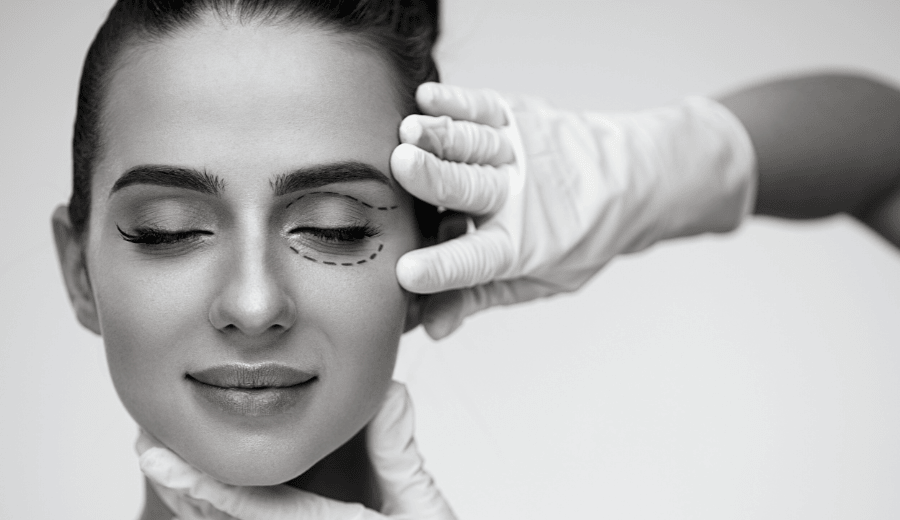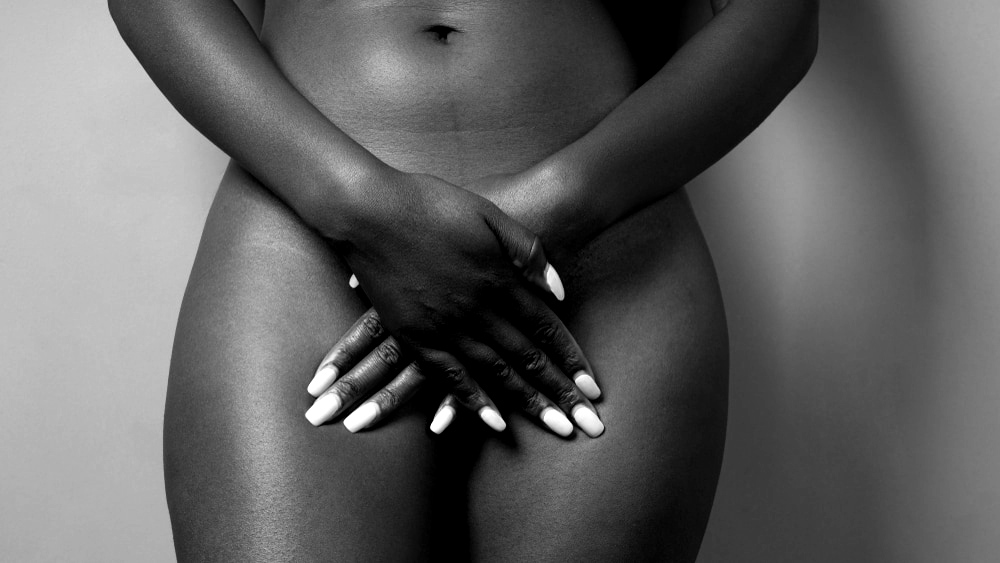August 5th, 2024
Dr. Mulholland, Md
Many of us are familiar with the struggle of unwanted facial puffiness or roundness, often wondering if it’s possible to target this area for a more defined look. Here, we’ll not only explore the realities behind facial fat loss but also offer practical, effective strategies for those looking to enhance their facial aesthetics. We should remember that the attempt to reduce facial fat is primarily an aesthetic concern, and bear in mind that some people have naturally fuller cheeks. Not everyone suits a lean, angular facial structure, so it is worth thinking thoroughly about the look you’d like to achieve.
Myth vs. Reality: Understanding Facial Fat Loss
The dream of localized fat reduction—targeting fat loss in specific areas of our bodies, including the face – has long been debunked. Reality tells us that facial fat loss is closely tied to overall body fat reduction. Essentially, as we decrease our body fat through a combination of diet, exercise, and lifestyle changes, we’ll gradually notice a reduction in facial fat as well.
It’s also not true that facial exercises, such as stretching, can contribute to significant fat loss. While such exercises may tone up facial muscles, they are unlikely to result in overall fat reduction. The beauty market is also flooded with products that claim to promote facial slimming. Most such claims are, at best, highly exaggerated. While cosmetics can be used to give the appearance of more angular cheekbones, this does not constitute real reduction.
Another common myth is that only overweight people have rounded cheeks. This is not the case. Facial fat can accumulate in people of all ages, genders, races, and levels of fitness. Genetics, bone structure, water retention, and other factors can all lead to a propensity to have a fatter face.
What Causes Face Fat?
Facial fat can be attributed to several factors:
- Genetics: Just as with the rest of your body, your genes play a role in where and how you store fat.
- Bone Structure: A well-defined bone structure can make facial fat less noticeable, while a less pronounced bone structure might make facial fat more apparent.
- Age: As we age, we lose muscle and bone density, which can lead to changes in facial structure and increased fat deposits.
Weight Gain: Naturally, an increase in body weight often leads to increased face fat. Usually, fat gain is distributed throughout the body. - Poor Diet: High-calorie and processed foods can lead to overall and facial weight gain. Many of these foods are deceptively high in calories and it can be easy to exceed daily recommended consumption levels.
- Lack of Exercise: A sedentary lifestyle contributes to weight gain, affecting the face. If you don’t exercise, insufficient calories are being burnt to offset your food intake, and fat deposition results.
- Water Retention: This condition is often caused by high sodium (salt) intake, leading to facial puffiness.
8 Methods of How to Get Rid of Facial Fat
Fortunately, although there is a wide range of causes of facial fat, there are an equally large number of ways to combat it. We’ve identified eight of the most promising below:
Cardio Workouts

Cardio exercises are paramount in burning calories and reducing overall body fat, which, in turn, can decrease facial fat. Here are five accessible cardio workouts you can do at home or in the gym:
- Brisk Walking or Jogging
- Cycling or Spin Classes
- Swimming
- High-Intensity Interval Training (HIIT)
- Jump Rope
- Rowing Machine or Cross Trainer
Simple interventions such as getting a Fitbit or similar device to monitor the number of steps you take in a day (aim for 10,000) can help instill a more active lifestyle. If you find you are more motivated in a group, then try to exercise with friends or play an active sport such as tennis, basketball, or squash. Don’t confuse a flexibility-based activity like Pilates or yoga with cardio. While the former activities can help you become more limber and stronger, they won’t result in significant weight loss. A rule of thumb is that any exercise that makes you breathe more heavily and perspire provides a good cardio workout.
Stay Hydrated
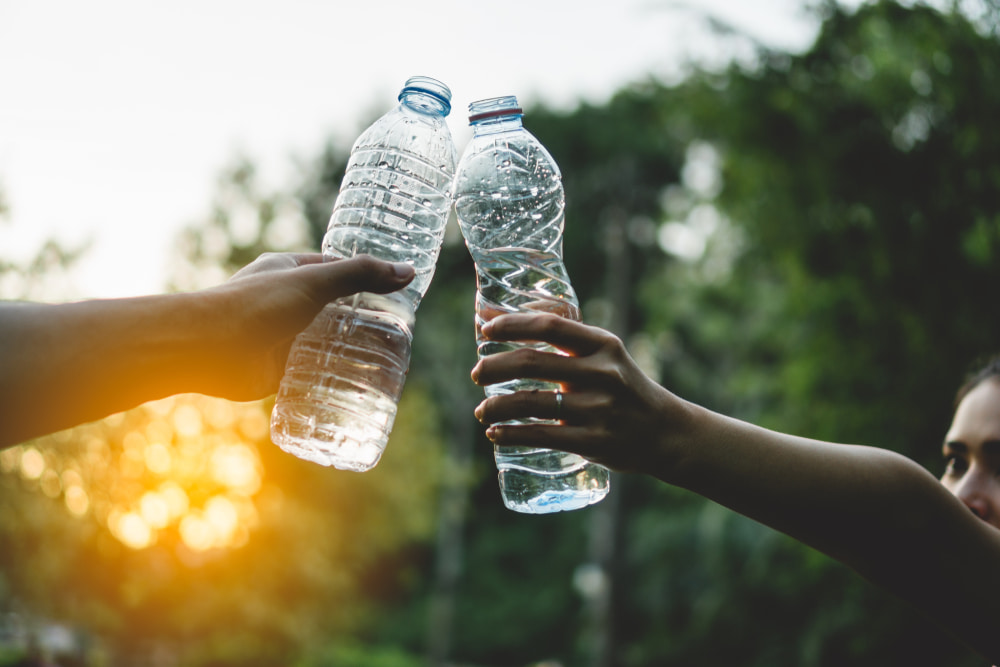
Proper hydration can significantly reduce facial puffiness by combating water retention. There are several physical processes at work when you stay well-hydrated:
- Increased Metabolism: Water is essential for metabolizing stored fat into energy, a process known as lipolysis. The first step of this process, known as hydrolysis, requires water to break down fat molecules. Adequate hydration can improve your metabolism, promoting more efficient calorie and fat burning.
- Appetite Suppression: Drinking water before meals can lead to a feeling of fullness, reducing hunger and the likelihood of overeating. A study published in the Journal of Natural Science, Biology and Medicine found that individuals who drank water before meals consumed fewer calories compared to those who did not drink.
- Enhanced Physical Performance: Proper hydration is critical for maintaining optimal physical performance. Dehydration can lead to fatigue, reduced motivation, and decreased endurance, all of which can negatively impact the effectiveness of your workouts. On the other hand, being well-hydrated can improve your ability to engage in longer, more intense exercise sessions, leading to increased calorie burn and muscle development, both of which are beneficial for weight management.
- Preventing Mistaking Thirst for Hunger: Sometimes, the body’s thirst signals can be mistaken for hunger, causing excess calorie consumption. By staying hydrated, you can more accurately recognize your body’s hunger cues, reducing the likelihood of consuming excess calories.
- Optimizing Kidney Function and Waste Removal: Good hydration is essential for kidney function, including the removal of waste products from the body.
When dehydrated, the body’s ability to remove waste and maintain a healthy metabolism can be compromised, potentially leading to reduced fat processing and an increased likelihood of weight gain. - Supporting Digestive Health: Water is crucial for maintaining a healthy digestive system. It improves the absorption of nutrients while preventing constipation. A well-functioning digestive system is also essential for maintaining a healthy weight, as it helps ensure that food is efficiently processed and waste is regularly eliminated.
Overall, staying hydrated supports various physiological processes that contribute to maintaining a healthy weight and can prevent unnecessary weight gain, including facial fat. Aim for at least 8 glasses of water a day and try infusing your water with fruits for an added taste boost without the calories. Ideally, avoid sugary cordials and favor sugar-free options instead.
Reduce Alcohol
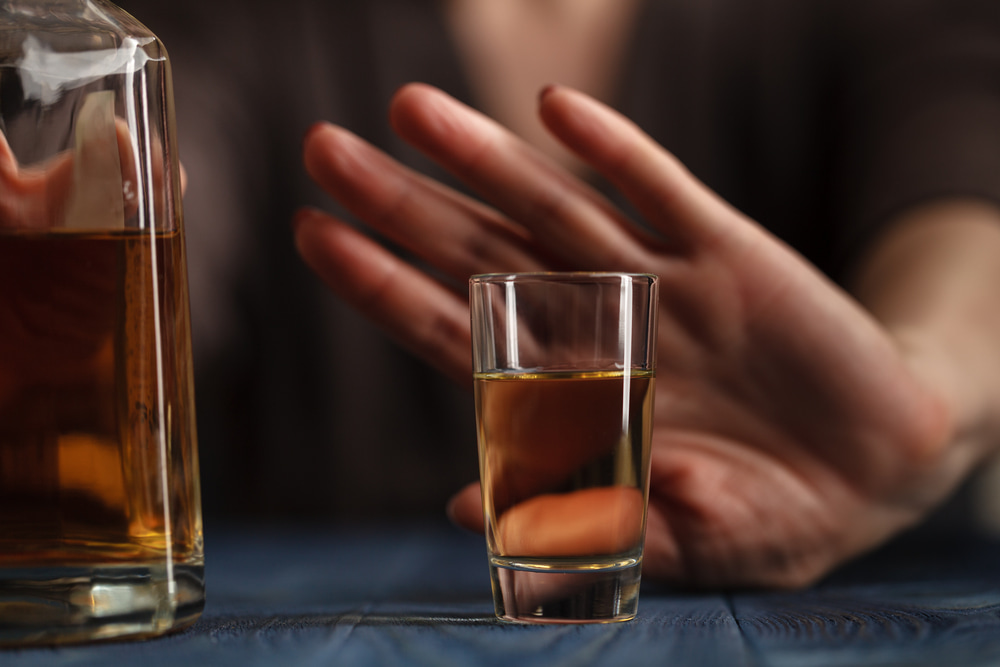
Alcohol consumption is closely linked with dehydration and facial bloating.
Here’s how alcohol contributes to facial weight gain:
- Caloric Intake: Alcohol is high in calories, with about seven calories per gram, which is almost as calorie dense as fat. Drinking alcohol frequently or in large quantities can significantly increase your daily caloric intake, leading to weight gain that can manifest in the face as well as other parts of the body.
- Impaired Metabolism: Alcohol consumption can interfere with the body’s ability to burn fat. The liver prioritizes metabolizing alcohol over other substances, including fats, which can lead to fat accumulation. This metabolic shift can contribute to increased fat storage, including in the facial area.
- Dehydration: Alcohol is a diuretic, increasing urine production, which can result in dehydration. Dehydration can cause the body to retain water as a compensatory mechanism, which can result in puffiness and bloating, including in the face. This bloated appearance can mimic facial fat gain.
- Hormonal Effects: Drinking alcohol can affect hormone levels that are involved in hunger and satiety, such as leptin, ghrelin, and cortisol. These hormonal changes can lead to increased appetite and cravings for high-calorie, unhealthy foods, contributing to weight gain. Over time, this can affect facial fat distribution.
- Inflammation: Alcohol consumption can lead to inflammation and swelling throughout the body. Chronic alcohol use can exacerbate this inflammation, leading to a puffier appearance in the face. This inflammation can also damage skin cells, affecting skin elasticity and contributing to a less defined facial appearance.
- Poor Sleep Quality: Alcohol can adversely affect sleep quality and patterns, leading to sleep disturbances.
As we will discuss next, poor sleep is associated with weight gain due to its impact on hormones that regulate appetite and satiety. Additionally, lack of quality sleep can lead to next-day fatigue, reducing motivation for physical activity. Moderating your alcohol intake can help minimize puffiness and contribute to overall health.
The CDC describes “moderate drinking” as follows:
- Men – 2 drinks or less per day
- Women – 1 drink or less per day
Heavy drinking is defined as 15 or more drinks per week for men and 8 or more per week for women.
Get Enough Sleep

Sleep plays a critical role in weight management and hormonal balance. Ensure 7-9 hours of quality sleep per night to support your weight loss goals and improve facial aesthetics. Dr. Matthew Walker, author of the seminal book “Why We Sleep” reveals that when you are sleep-deprived, the body stubbornly refuses to shed fat. Furthermore, certain changes in the amygdala, or the emotional regulating part of the brain, mean that sleep-deprived people tend to feel less satisfied and may crave calorie-dense comfort foods. Discussing participants in a sleep deprivation study, Walker writes, “we found that when those individuals hadn’t been getting sleep, the amygdala, this hedonic center, was lighting up far more brightly in response to those very pleasurable, very unhealthy foods.”
Eat a Healthy and Balanced Diet

Opt for a balanced diet rich in fruits, vegetables, lean proteins, and whole grains. Avoid fad diets; instead, focus on nutritional balance to support sustainable weight loss. Here are some low-fat meal suggestions for breakfast, lunch, and dinner:
Breakfast
Oatmeal with Fresh Berries and Almond Milk (Vegetarian)
Prepare a bowl of oatmeal using unsweetened almond milk. Top with fresh berries like strawberries, blueberries, and a sprinkle of cinnamon for natural sweetness and flavour without adding fat.
Egg White Scramble with Spinach and Tomatoes
Scramble egg whites with fresh spinach, cherry tomatoes, and herbs. Serve on whole-grain toast for a fibre-rich, low-fat start to your day.
Greek Yogurt with Honey and Walnuts (Vegetarian)
Choose low-fat Greek yogurt and top it with a drizzle of honey and a few crushed walnuts for crunch. This meal provides protein and healthy fats without excessive saturated fat.
Lunch
Grilled Chicken Salad with Mixed Greens
Grill a skinless chicken breast and serve it over a bed of mixed greens, including spinach, arugula, and romaine. Add vegetables like cucumber, bell peppers, and a light vinaigrette dressing.
Vegetable Stir-Fry with Tofu (Vegetarian)
Stir-fry a variety of vegetables, such as broccoli, carrots, bell peppers, and snap peas in a non-stick pan with a little soy sauce and ginger. Add cubed tofu for protein. Serve over brown rice or quinoa.
Turkey and Avocado Wrap
Use a whole-grain tortilla and fill it with sliced turkey breast, lettuce, tomato, and slices of avocado. Add a splash of lime for extra flavour without adding fat.
Dinner
Baked Salmon with Asparagus
Season a salmon fillet with lemon, dill, and black pepper. Bake and serve with steamed asparagus and a side of quinoa for a balanced, low-fat meal.
Lentil Soup (Vegetarian)
Cook lentils with diced tomatoes, carrots, celery, onions, and garlic in a vegetable broth. Season with herbs for a hearty, low-fat vegetarian dinner option.
Grilled Vegetable Kabobs with Shrimp
Thread shrimp and several vegetables, such as zucchini, bell peppers, onions, and cherry tomatoes, onto skewers. Grill and serve with couscous for a light, flavorful dinner.
Sodium
High sodium intake can lead to water retention and facial puffiness. Avoid processed foods, which are often high in sodium, and season your meals with herbs and spices instead of salt. Avoid high-salt snacks like potato chips. Here’s a useful article from the National Heart, Lung and Blood Institute on five ways to cut salt from your diet and improve health.
Manage Stress
Stress can lead to weight gain and increased facial fat through various hormonal and behavioural mechanisms.
Elevated stress levels trigger the release of cortisol, a hormone that increases appetite and cravings for high-calorie, sugary, and fatty foods, contributing to weight gain. Cortisol also promotes fat storage, particularly around the abdomen, which can indirectly affect facial fullness due to overall weight gain. Additionally, stress can trigger the coping mechanism of emotional eating. Stress-induced disruptions in sleep patterns further complicate weight management by affecting hunger hormones like ghrelin and leptin, increasing appetite and cravings.
Moreover, stress can lead to water retention and inflammation, resulting in a puffy appearance of the face. Some individuals may also increase alcohol consumption to manage stress, adding extra calories and exacerbating dehydration. Incorporate stress-reduction techniques into your daily routine, such as meditation, yoga, and deep breathing exercises.
Take Advantage of Medical Spa
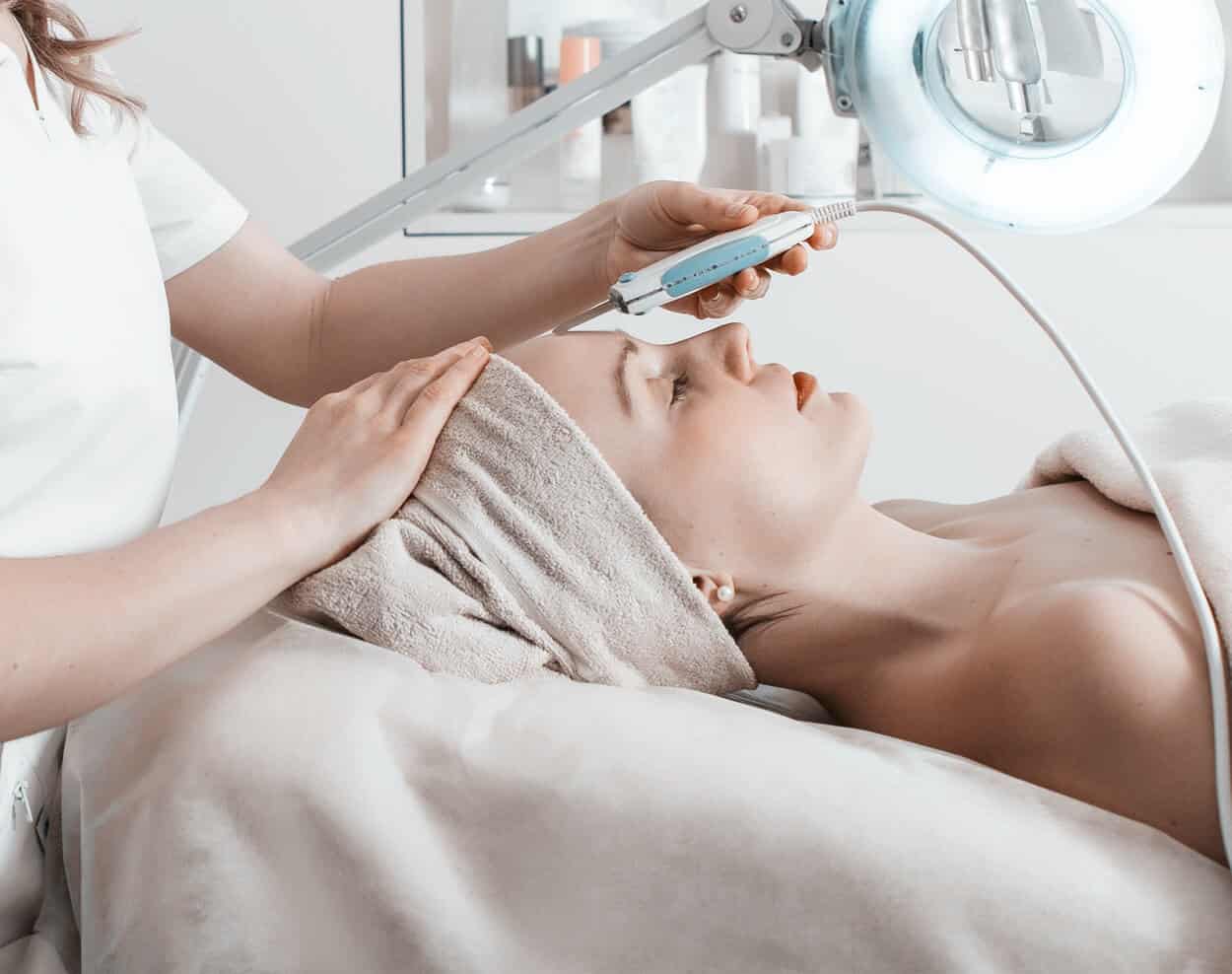
Although many lifestyle changes can help reduce facial fat, they don’t work for everyone. What’s more, it takes considerable time to implement such approaches and notice their effects. For those seeking more immediate results, options like buccal fat removal, double chin treatments, and facial liposuction.
Buccal Fat Removal
Buccal fat removal is a cosmetic procedure aimed at reducing the volume of the buccal fat pads in the cheeks, thereby creating a more contoured facial appearance. Ideal candidates are individuals with fuller cheeks looking for a more defined facial structure. The process involves a small incision on the inside of the cheek, through which the buccal fat is gently extracted. Recovery time is relatively minimal, with most patients returning to normal activities within a few days, although full recovery may take a few weeks. Expected outcomes include a slimmer, more sculpted facial contour, with results becoming more apparent as swelling subsides.
Double Chin Treatments
Various treatments are available for addressing excess fat under the chin, commonly referred to as a double chin.
Neck Lift: This surgical procedure tightens the skin and underlying muscles of the neck to improve contour and reduce sagging. Ideal candidates are those with good skin elasticity and excess neck skin or fat. Recovery time ranges from two to four weeks, with outcomes including a more defined jawline and neck profile.
Kybella Injections: This is a non-surgical option that utilizes deoxycholic acid injections to break down fat cells. Suitable for individuals with moderate fat under the chin who prefer a non-invasive treatment. Recovery is swift, with most patients resuming normal activities immediately. Multiple sessions may be required for optimal results, including reduced under-chin fat.
CoolSculpting: This non-invasive procedure uses controlled cooling to freeze and eliminate fat cells. It’s ideal for those with small to moderate amounts of fat under the chin. There is no significant recovery time, and patients can expect to see results over the course of several weeks as the body processes the eliminated fat cells, resulting in a more defined chin and jawline.
Neck Liposuction
Neck liposuction techniques, such as SmartLipo, Vaser Liposuction, and BodyTite, are designed to remove excess fat from the neck area, providing a more defined neck and jawline. These procedures involve the use of laser, ultrasound, or radiofrequency energy to liquefy fat before its removal, enhancing precision and reducing recovery time. Ideal candidates are those with good skin elasticity and localized fat deposits in the neck. Recovery times vary but are generally short, with most patients returning to regular activities within a week. The expected outcomes include a sleeker neck profile and improved contour.
For those considering facial fat reduction, it is essential to consult with a qualified professional to discuss the most appropriate treatment options for your unique needs and goals. Toronto Plastic Surgeons, renowned for his expertise and experience in cosmetic procedures, offers personalized consultations to help you achieve your desired outcomes.
FAQs
How Long Does It Take to Lose Face Fat?
The time frame varies depending on your overall weight loss progress, genetics, and the methods you’re implementing. Surgical intervention is the quickest route to a slimmer facial shape. However, lifestyle changes may promote long-term facial slimness.
Is It Hard to Lose Face Fat?
While it can be challenging, adopting a holistic approach to weight loss and facial exercises can yield significant results. In so doing, you’ll enjoy better health overall.
Is Face Fat Permanent?
No, with the right strategies, you can reduce facial fat and improve your facial aesthetics. However, it is important to recognize that some faces are naturally chubbier due to the underlying bone structure and individual genetic factors.

